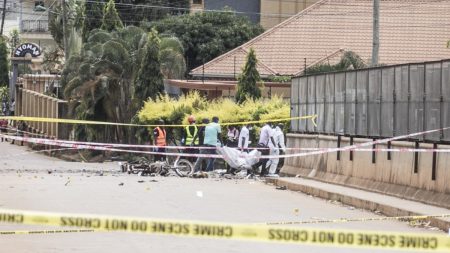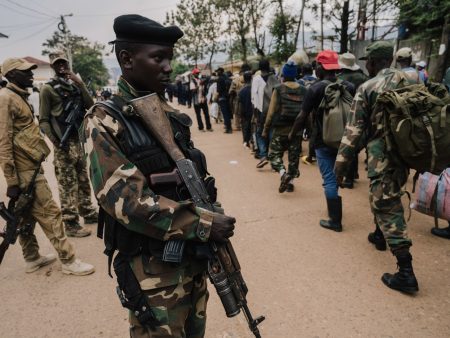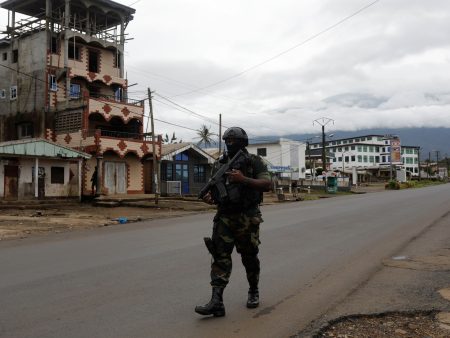The unveiling of a new memorial in Cape Town’s Company’s Gardens on January 22, 2024, marks a significant step in rectifying a century of historical oversight. The memorial, orchestrated by the Commonwealth War Graves Commission (CWGC), commemorates 1,772 South Africans of color, primarily Black laborers, who perished during World War I in Africa. Their contributions, crucial to the war effort, were largely forgotten due to the racialized politics of the time and the overshadowing of the African campaigns by the European theater. The memorial, comprised of African iroko hardwood posts bearing each individual’s name and date of death, brings their sacrifice into the light, acknowledging their roles as drivers, carriers, and laborers who supported the Allied forces. This initiative is the first phase of a larger project aiming to recognize the estimated 100,000 Black Africans who lost their lives serving the Allied cause in Africa during the Great War.
The story of these forgotten soldiers begins with men like Dolly Jenniker and Zulu Madhliwa, who drowned while ferrying supplies across the flooded Orange River in 1915 during the invasion of German South West Africa. Their deaths, like many others, were relegated to footnotes, their families left with little information and no formal recognition of their sacrifice. The newly discovered casualty records from a South African National Defence Force archive have allowed the CWGC to finally identify and honor these individuals, bringing closure to descendants like Zweletu Hlakula, whose great-grandfather, Job Hlakula, died while returning from East Africa. The memorial stands as a testament to the importance of historical accuracy and the enduring impact of war on individuals and families, regardless of their race or role.
The CWGC, established in 1917, was tasked with commemorating all who died in service of the British Empire, regardless of rank or ethnicity. However, historical biases and institutional practices resulted in the omission of many Black African casualties. While white South African soldiers and the mixed-race Cape Corps received recognition, the Black laborers who served alongside them were largely forgotten. The better-documented South African Native Labour Contingent (SANLC), which served in Europe, is commemorated at various sites, particularly for the tragic sinking of the SS Mendi. Yet, the men who perished in the African campaigns, fighting in challenging environments and facing diseases like malaria, remained unrecognized until the discovery of the archival records.
The East Africa Campaign, though often considered a sideshow to the main European front, was a grueling and protracted conflict lasting four years. The guerilla tactics employed by German commander Colonel Paul von Lettow-Vorbeck contributed to a devastating loss of life, with disease and malnutrition claiming the majority of victims, predominantly Black Africans. The harsh conditions, described vividly in accounts by white European soldiers, were even more challenging for the Black carriers who transported supplies and supported the troops. Their experiences, marked by arduous journeys, inadequate provisions, and rampant disease, underscore the immense human cost of the war, particularly for those from marginalized communities.
The repatriation of sick and weakened laborers from East Africa further highlighted the disregard for their welfare. The “Aragon incident,” detailed in the Pike Report, exposed the tragic consequences of inadequate medical care and the inhumane conditions aboard the HMT Aragon. Over 100 men died during the voyage from East Africa to South Africa, their bodies buried at sea, adding to the grief and lack of closure for their families. The newly erected memorial now offers a place for descendants to mourn their lost loved ones, among them Maeli Makhaleyane, Jack December, Mack Mokgade, and Piet September, whose names are now etched in the iroko wood.
The Cape Town memorial, situated near prominent national institutions, provides a space for remembrance and education. Its location ensures that the story of these forgotten soldiers will reach a wider audience, prompting reflection on the comprehensive impact of war and the importance of acknowledging all who served. The memorial acknowledges a history often excluded from textbooks and public discourse, highlighting the sacrifices of grandfathers, sons, brothers, and descendants of chiefs who were conscripted into a war far from home. This act of remembrance not only honors the individuals who perished but also serves as a reminder of the enduring need for historical accuracy and the recognition of all who contribute to times of conflict. The CWGC’s ongoing commitment to commemorating the estimated 89,000 Black East Africans who served the Allied cause signifies a broader movement towards a more inclusive and accurate historical narrative of World War I.










